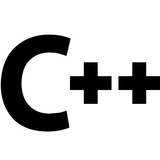tg-me.com/cpp_geek/304
Last Update:
🚀 Сегодня я покажу вам простой, но очень полезный приём в C++: как элегантно управлять временем жизни ресурса с помощью std::unique_ptr и кастомного deleter'а.
📌 Задача: у нас есть не-C++ ресурс, например, FILE* из stdio.h. Мы хотим, чтобы он автоматически закрывался, как только выходит из области видимости.
Вместо ручного вызова fclose, используем std::unique_ptr с кастомным deleter'ом:
#include <memory>
#include <cstdio>
int main() {
// Кастомный deleter для FILE*
auto fileDeleter = [](FILE* f) {
if (f) {
std::puts("Файл закрывается автоматически!");
std::fclose(f);
}
};
// Умный указатель с кастомным deleter'ом
std::unique_ptr<FILE, decltype(fileDeleter)> file(std::fopen("data.txt", "r"), fileDeleter);
if (!file) {
std::perror("Не удалось открыть файл");
return 1;
}
// Файл будет автоматически закрыт в конце блока main()
}
💡 Такой подход безопаснее, чем
fopen/fclose, особенно в реальных проектах с множеством return'ов и исключениями. А главное — код остаётся чистым и идиоматичным.🔥 А вы используете
unique_ptr с кастомным deleter’ом в своём коде? Поделитесь, для чего вы его применяли!➡️ @cpp_geek
BY C++ geek
Warning: Undefined variable $i in /var/www/tg-me/post.php on line 283
Share with your friend now:
tg-me.com/cpp_geek/304
